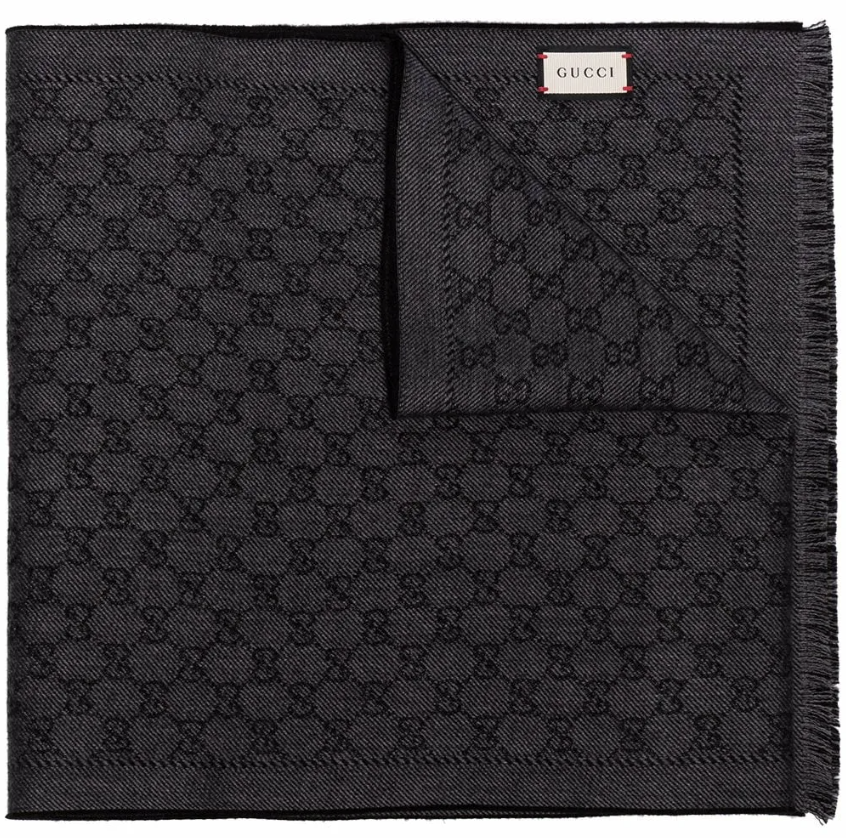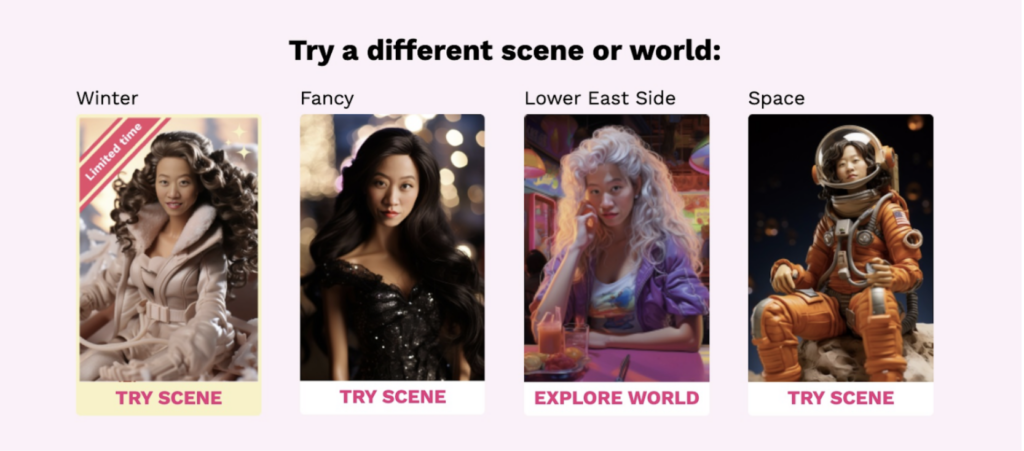

Last updated on
A powerful brand is crucial for your company’s success. Here is how to simplify the
branding process and make your unique brand an accessible, efficient customer
communication tool. With only an hour of your time, begin building a robust brand for
your small business, at an affordable cost.
Start building your best brand – an easy guide
Let’s break down the three fundamental steps toward a brand that resonates with your
audience.
A few years ago, logo-mania took hold of the branding landscape. Nearly everyone took
up large parts of their products and communications with their logos, hoping to ensure
they would be visible from everywhere. Think of GUCCI hats.
Now, subtlety is in fashion and “subtle branding” is the current branding idea. This
means the brand is there, but not “in your face.” It’s in the details, patterns, nuances. In
other words, the rule that the logo must be brighter, bigger, more noticeable can now
confidently be broken.

The second trend is branding with help of tools – Artificial Intelligence. Brand managers
and copywriters are incorporating AI-based tools to solve their tasks and save time. For
example, they use neural networks to create visuals for comprehensive campaigns or
for postings on social media.
The creative projects and other special projects using AI should complement and reveal
the brand’s values, not contradict them. Artificial intelligence used thoughtlessly
generates the risk of doing more harm to the brand than good. Relying 100% on AI and
neural networks is not feasible because illustrations can still occasionally include
extraneous limbs on people and other unsettling details.

Examples of cool special projects using AI include the viral photos and videos generated by AI during the hype wave of the Barbie movie.
These projects have great potential due to their relevance and “virality.” This approach can effectively capture audience interest and engagement by leveraging trending topics and the unique capabilities of AI to create share-worthy content.
An example of a special project by Mattel using artificial intelligence.

Branding from the perspective of values and meanings
The era of mindless consumption is gradually declining. Observing the most advanced
brands and how they behave and position themselves, reveal there is a trend toward
more mindful choices of services, goods, and products.
Before making a purchase, customers now ask themselves: “What do I know about this
brand? Who is its face? How does this brand behave in media and non-media spaces?”
They make purchase decisions only when they find satisfactory answers to their
questions.
Brands have cautiously begun using faces for advertising campaigns and monitoring
what company executives and employees say in the media and on social networks.
Thoughtless behavior in the media space has become costly. Today, it is better to think
twice before breaking written and unwritten rules.
A few years ago, thoughtless statements would briefly become a topic of discussion on
social networks, but today they can cost a company customers and orders. Now, brands
pay critical attention to their reputations.
This trend is a consequence of the previous trend towards mindfulness. Eight years
ago, the target audience chose the iPhone because having an iPhone was cool. Many
brands built their identity on premium, elitism, exclusivity, and that was exactly what
attracted the target audience.
Now, audience preferences have changed. As mentioned earlier, the trend is toward
mindfulness. This means consumers pay close attention to service, convenience,
compatibility with other services and products. If a brand is not integrated into the
systems used by the audience, remaining TOP OF MIND – is difficult.
Conclusion: Back to Basics
Over decades, marketers and brand managers got deeply involved first in vivid
advertising campaigns and then in tactical performance activations. In doing so, many
made a serious mistake, they forgot about their brand’s philosophies.
With the penetration of the internet into customers’ lives, it has become harder for
companies to distinguish themselves from each other. Today, a search engine offers not
two, not three, not ten, but thousands of brands for a single query. An endless “scroll” in
delivery stores, a succession of changing images—and only fractions of a second to
capture a customer’s attention.
The time is coming for clear products and brands that can hold the focus of the
audience and know how to satisfy their needs.
Despite a wide assortment in various self-care categories (NIVEA has shampoos, face
creams, and deodorants), the NIVEA brand will remain “the best and most recognizable
basic cream in the blue tin”. And that’s great.
The essence of why brands were created has been lost amidst excessive branding and
add-ons. Perhaps a return to their DNA will help brands find or regain their audiences
more quickly.
Together with the NDG team, we delve into the key elements that make up a company’s image.
Brand, trademark, trade mark, logo – many think these are all synonyms. In reality, you
can have a product and a registered trademark, but still not have a brand.
What are the differences between these concepts, and what does emotional connection
and engagement have to do with it? The NDG team, your personal brand strategist,
explains in more detail.
Key Concepts
Defining the key elements that make up a company’s image:
Product, Goods, Service — What the company produces or sells. Commercial outputs
themselves do not have identifying features such as a logo, name, or packaging. For
example, a table or computer program is a product.
Naming — The unique name of a product, good, or service.
Logo — An image that visually supports the naming. Sometimes, the brand name in a
special font can serve as the logo.
Trademark — A registered logo, name, or both.
Brand — A line of products or a company that has managed to form an emotional
connection with its target audience.
The most challenging aspect for many entrepreneurs is understanding the differences
between a trademark and a brand, and how to transform the former into the latter.
Legal Protection
To use naming or a logo with peace of mind, a company owner must legally secure
rights to them, thus obtaining a registered trademark.
Important: This step does not transform your company into a brand; however, it is
crucial not to skip it. A trademark provides legal protection, ensuring that no other entity
can use the same name or logo in the same market sector. This legal backing is
essential for maintaining the uniqueness of your visual identity and product names in
the marketplace.
However, having a trademark does not automatically grant your product or company the
status of a “brand.” A brand goes beyond legalities and involves emotional connections,
reputation, customer perceptions, and much more. To build a brand, you need to create
value and meaning around your trademark that resonates with your audience, fostering
loyalty and recognition. This emotional and psychological connection is what truly
differentiates a brand from a mere trademark.
When developing your brand, you can face several types of risks if you don’t secure
your intellectual property properly. Here are some scenarios to consider:
Commercial Risks — As you develop your brand, a competitor might emerge. This
competitor could successfully produce a product under a logo similar to yours, leading
to customer confusion and loss for your business.
Reputational Risks — If a competitor copies your product and logo but sells inferior
quality goods, it could damage your brand’s reputation. Consumers may mistakenly
associate the poor quality of the competitor’s products with your brand if the logos are
similar enough.
Legal Risks — There’s a possibility that a competitor might copy your logo, register it
themselves, and then accuse you of plagiarism. This could lead to costly legal disputes
and potentially force you to rebrand, should they succeed in their claim.
Securing a trademark for your branding elements, such as logos and names, helps
mitigate these risks by providing legal protection against unauthorized use by
competitors. This is an essential step in protecting not just the visual identity of your
brand, but also its reputation and market position.
Corporate identity is a set of rules that helps to form a unified perception of your
business. This identity includes all the design elements that create a unique image of
the brand: logo, fonts, slogan, and color palette.
Corporate identity serves several purposes:
A trademark can exist without a corporate identity. However, as soon as you start
working on recognition and forming strong associations—essentially transforming a
trademark into a brand—a well-defined corporate identity becomes essential.
With a corporate identity, you can ensure that your audience recognizes not only the
logo and the company name but the overall image of the company: communication
style, visuals, values.
Recognition is an integral attribute of a brand and another key difference between a
brand and a trademark. It’s good if the audience recognizes the name and logo among
similar companies. It’s ideal if they can recall your brand without any prompts.
A brand can be either mass-market or niche. That is, it’s not as important how many
people know you, but rather what percentage of the entire target audience is familiar
with your company. This focus on recognition and recall underscores the importance of
a cohesive and distinct corporate identity that resonates with and is memorable to your
target audience.
At the core of every strong brand lie enduring associations. These associations are
crucial because they are the key elements that help differentiate a brand from it
competitors. Additionally, associations are essential for building an emotional
connection with the audience.
To foster enduring associations, brands register not only their trademarks or trade
marks but also other distinctive features. For instance, the company Mattel has
patented the facial expression of the Barbie doll to prevent competitors from copying it.
This type of intellectual property protection extends beyond logos and names,
encompassing unique design elements that are synonymous with the brand.
Such associations are vital because they enable consumers to identify a brand quickly
and create a mental linkage between the product and their personal experiences or
feelings. This connection is what elevates a brand from being just a provider of products
or services to being a part of the consumer’s lifestyle and identity. By securing these
unique features legally, brands can maintain their distinctive market position and
continue to build their brand equity.

The patented facial expression of Barbie instantly creates a strong association with the
manufacturing brand.
A brand should evoke positive emotions within its target audience. There are niche
companies focused on a specific segment. Their values and aesthetics might trigger
negative emotions among the broader consumer base, and that’s okay.
What’s worse is when a brand fails to evoke any emotions at all. In such cases, the
decision to choose that company becomes dependent on more rational factors, such as
cost or available discounts. This lack of emotional engagement can make the brand
easily interchangeable and less memorable, weakening its position in a competitive
market.
Without associations, recognition, and emotional connection, there is no brand. But the
work on the brand does not end there. It’s essential to continue strengthening the
connection with the target audience to increase the brand’s power.
A distinctive feature of strong brands is the engagement of their target audience. In this
case, the brand can turn customers into “ambassadors,” active promoters of the
company. These promoters are ready to recommend the products to friends, participate
in activities, buy merchandise, and emphasize their values through the brand’s
products. This level of engagement not only helps in amplifying the brand’s reach but
also solidifies its identity and influence in the market.
An example of merchandise from the energy drink manufacturer Red Bull — products in
the catalog as a way to support audience engagement.

Added Value
Transforming a trademark into a brand requires a lot of time and regular investments.
Should an entrepreneur spend their resources on this if there are other ways to increase
sales?
If you are looking towards the future, then yes, because one of the main differences between a trademark and a brand is the added value. In other words, given similar
conditions, the target audience is willing to pay more for a product because they value the brand and trust the company.
A strong brand isn’t threatened by the appearance of competitors offering similar
products at reduced prices. Discounts are unlikely to disrupt established habits and the
loyalty of the audience. This resilience is built through the emotional and psychological
connections that a well-established brand fosters with its customers.
To transform a trademark into a brand, you need a systematic approach:
Launch comprehensive brand or brandformance campaigns: This will help increase the
company’s recognition and communicate to the audience the key benefits and values of
the company. Learn how to promote your business using brandformance.
Develop a tone of voice (TOV)
Your brand’s voice could be professional, friendly, humorous. It should be recognizable.
Learn how to create a unique tone of voice.
Create unique ideas
Consumers are drawn to exclusivity and innovation. There are 7 brainstorming
techniques—generate ideas and solutions to engage your audience uniquely.
Show emotion
Use humor, show care, determination, and empathy in communications with your
audience. Learn how to correctly implement humor in communications.
Demonstrate expertise
It is important not only to provide useful information but also to support it with concrete
facts and actions. Learn how to package your experience into a case study and attract
clients.
Assess brand health
Ask customers about their purchasing experience, their attitude towards your product
and company. This type of research is known variably as Brand Health Monitoring or
Brand Tracking. It can be conducted by a marketing agency or by the company itself.
Implementing these strategies will help elevate a mere trademark into a robust
brand by forging stronger connections with your audience and differentiating
your company in the marketplace.
Through such studies, you can determine:
These metrics help gauge the health of a brand, providing insights into how effectively it
connects with its audience and stands out in the competitive landscape. They offer
valuable feedback on what areas of the marketing strategy are working and what areas
may need adjustment to better meet the needs of the target audience.
It’s advisable to conduct such monitoring regularly to track metrics over time. Monitoring
brand-related search queries and mentions on social media also aids in assessing
brand health.
The views expressed in the article may not reflect the editorial stance.